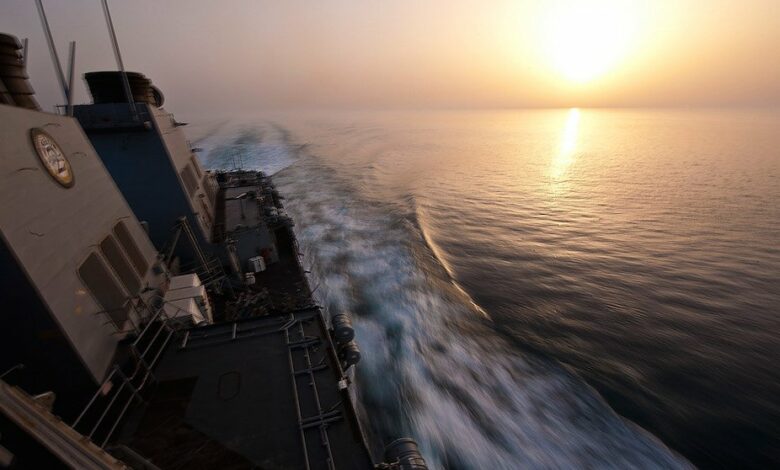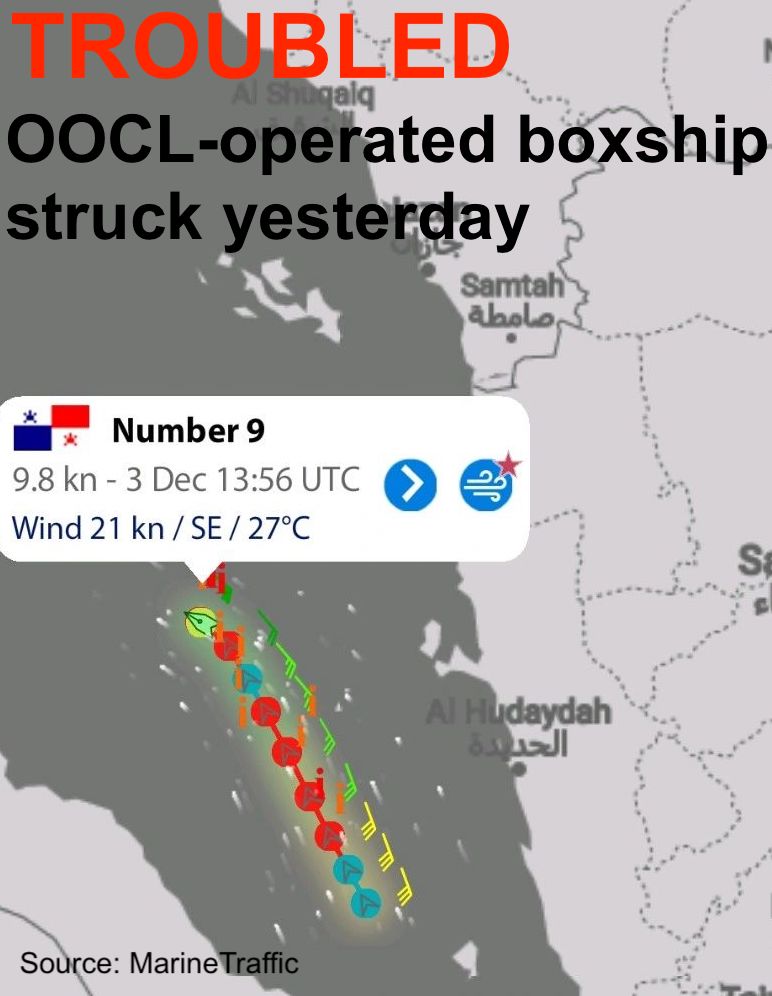Red Sea security situation worsens

Rockets and drones rained down on international merchant shipping in the Red Sea on Sunday with war risk surcharges now becoming more common and naval coalitions struggling to keep up with the volume of attacks in the Middle East.
This de facto pulls China closer into the conflict
In recent weeks, the Houthis from Yemen, as well as Iranians and Somalis, have started to attack Israeli-linked vessels in the Red and Arabian Seas with one car carrier and its 25 crew hijacked and taken to Yemen and a host of others targeted.
Over the weekend, however, the assailants went off script, attacking ships with seemingly no links to Israel, a nation that has been locked in a violent war with Hamas since October 7.
Likely making the most headlines from the barrage of attacks over the past 36 hours was the targeting of the 4,250 teu Number 9, a Panama-flagged ship operated by Overseas Orient Container Line (OOCL), whose parent is China’s state-controlled maritime behemoth, COSCO. The 2007-built ship was struck by a drone 63 miles northwest of Hodeida, Yemen, and took on water. Houthi forces then threatened a second strike on the ship unless it altered course towards the coast of Yemen. The captain replied that the course alteration was impossible as the engine was out of order. The ship had been on a voyage from Singapore to Europe at the time of the attack.

“From a container shipping perspective this is quite a ramp-up in the threat assessment when an alliance-operated vessel now got hit on an Asia-Europe service,” noted Lars Jensen, the founder of container advisory Vespucci Maritime via LinkedIn.
“From a geopolitical perspective it is worth noting that this de facto pulls China closer into the conflict as well given OOCL’s ownership,” Jensen added.
Meanwhile, the Unity Explorer, a Bahamas-flagged, UK-owned bulk carrier was attacked by rocket fire while transiting the Red Sea southbound approximately 34.5M west-northwest of Mocha, Yemen.
According to security consultants Ambrey, the bulker was approached by at least two unmanned aerial vehicles (UAVs). One exploded approximately 30 m over the vessel and a second exploded just one metre ahead of the bulker. No injuries were reported, and the vessel was not damaged.
The attacked bulker’s ownership and management was linked to Dan David Ungar, a British citizen. The Galaxy Leader, a car carrier seized by the Houthis last month and held in Hodeida, Yemen, was linked to Abraham Ungar, who hails from Israel.
Elsewhere, a Panama-flagged, Japan-owned, bulk carrier, AOM SOPHIE II, experienced heavy vibrations from an explosion nearby and was reportedly struck by an unidentified object in the southern Red Sea.
Also cause for concern were reports from the C. Genuine, a one-year-old, Liberia-flagged, South Korea-owned VLCC, whose crew reported an explosion in the air above the vessel astern approximately 10 miles offshore Taizz, Yemen. No damage or injuries were reported.
Finally, at around noon yesterday, Yemeni time, the USS Carney, an American destroyer, while in international waters, engaged and shot down a UAV launched from Houthi-controlled areas in Yemen. The drone was headed toward the American ship although its specific target is not clear.
“These attacks represent a direct threat to international commerce and maritime security. They have jeopardized the lives of international crews representing multiple countries around the world. We also have every reason to believe that these attacks, while launched by the Houthis in Yemen, are fully enabled by Iran. The United States will consider all appropriate responses in full coordination with its international allies and partners,” stated a release from US Central Command.
